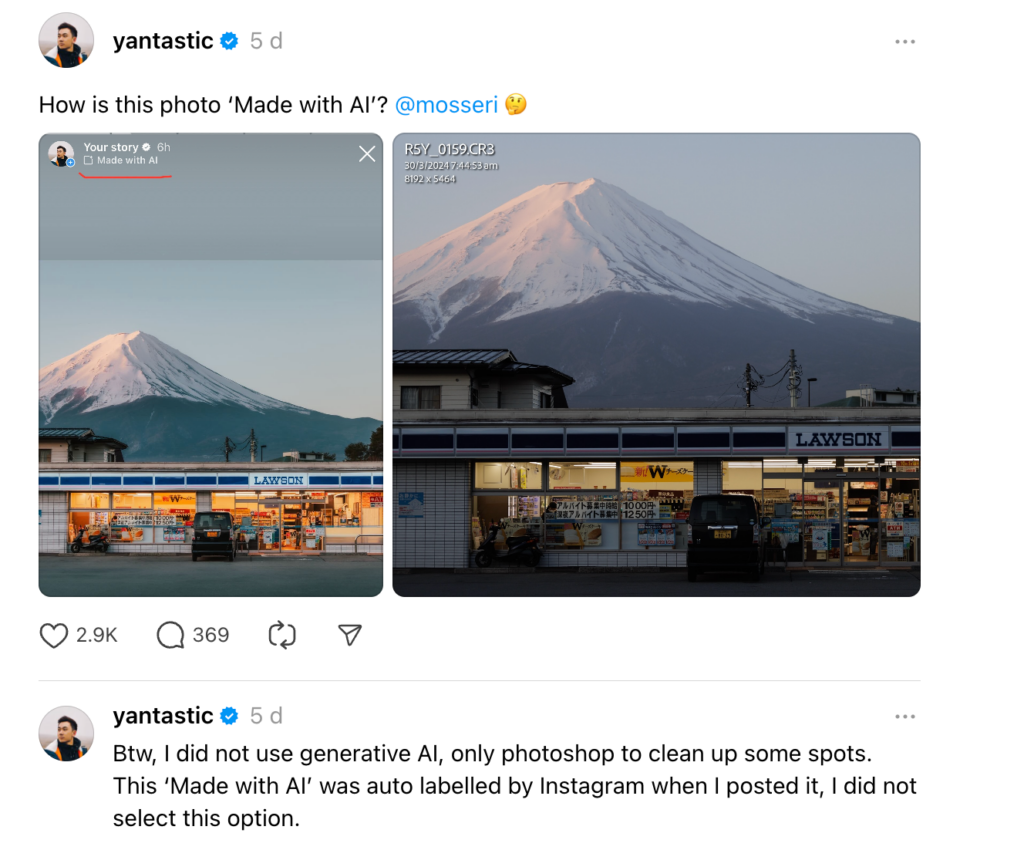Introduction
Photographers and content creators are encountering an unexpected issue on Instagram: their images are being mislabeled as “made with AI.” This new labeling initiative aims to promote transparency around AI-generated images. However, it appears that photos with minimal post-processing are also being affected.
Photographer’s Experience
Peter Yan’s Case
Photographer Peter Yan recently shared his experience on Threads, where his photo of Mount Fuji was labeled as “made with AI.” Yan posted both the RAW image and the edited version, showing that only minimal post-processing had been done.
Yan clarified, “I did not use generative AI, only Photoshop to clean up some spots. This ‘Made with AI’ was auto-labeled by Instagram when I posted it; I did not select this option.”

The Role of Generative Fill
Mislabeling Due to Generative Fill
According to Petapixel, the AI label was likely added because Yan used Photoshop’s Generative Fill to remove a trash can from the image. This type of edit is common and usually doesn’t involve AI, traditionally done with tools like the clone stamp.
Experiment by Petapixel
Petapixel conducted an experiment, editing a photo by removing blemishes using Generative Fill and uploading it to Instagram. The photo received the “Made with AI” label. They then edited the same photo using traditional Photoshop tools like the clone stamp and healing brush. This version did not receive the AI label.
Implications
Lack of Transparency from Meta
Meta has not disclosed the technology or methods used to determine what constitutes AI-generated content. This lack of transparency raises concerns, reminiscent of Instagram’s controversial nipple censoring algorithms.
Caution for Content Creators
Content creators should be cautious when using Generative Fill for minor edits. The risk of their work being mislabeled as AI-generated is significant, even if the edits are minimal.
Conclusion
Instagram’s new AI labeling initiative has unintended consequences, affecting photos with minor post-processing. Photographers and content creators should be aware of this issue and consider the potential for mislabeling when using tools like Photoshop’s Generative Fill. As Meta’s methods remain undisclosed, the community is left navigating these new waters with caution.



